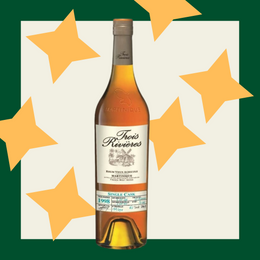Taste Testing A Series Of Vintage Rhum Clement From Martinique: Clement 6 Year Old c.1970’s; Clement 6 Year Old c.1980’s; Clement 15 Year Old c.1980’s; Clement 1970 & Clement 1952

Travel to another distillery that no longer smokes today, and with a very loaded past: Clément.
Like Jacques Bally, Homère Clément will mark his time, and with him the history of agricultural rum production. At a time when competition was already tough but healthy and respectful, emulating for the agricultural microcosm, he founded the Clément distillery in 1917: built on the ruins of an old sugar factory , the Acajou plantation then returned to a cane-growing activity, abandoned for almost 50 years.
Homère Clément was the distiller there until 1923, the date of his death, then his son Charles took over in the 1930s (and until 1973), perpetuating the family business. He was already bottling, and directly, in Martinique; a practice that was still uncommon at the time, breaking with the dictates of the time when distilleries sold their production in bulk (and in barrels), to quench the thirst of mainland France in sometimes dubious blends.
He devoted his life to developing the distillery, modernizing it several times, and even rebuilding it after a fire in 1938. In 1956, the company Héritiers H. Clément was created between the descendants of the founding father. Charles Clément's two sons (Georges-Louis and Jean José) took up the torch, before handing over the family business to the Hayot brothers (Yves and Bernard).
In 1988 the distillery finally stopped smoking and production was transferred to Simon. The Clément estate nevertheless retained the ancillary activities (reduction, brewing, aging and bottling), and is said to have more than 7,500 barrels.

--------------------------------------------------------------------------------------------------

Clément 6 ans d’âge / 44°
Tin stopper, 6 year old rum with an alcohol content of 44°, which could date from the end of the 70s, beginning of the 80s? Imported by "Simon Frères Paris", the official importer.
Mahogany and bright color, for a rum that appears very oily and fat, with enormous legs. The color is very strong and can seem quite surprising for a 6-year-old agricultural rum.
On the nose, it is as concentrated as the color suggests: candied fruits (raisins, prunes), burnt liquorice, a dark and smoky woodiness, and quite pronounced tobacco notes. For a 6-year-old agricultural rum, it would be more reminiscent of a candy rum (molasses). Spices (hot, cinnamon and cloves) and walnut (walnut wine) follow, for a nose with a present and incisive alcohol. With all these very gourmand and rather sweet heavy notes, the nose becomes obsessive and sticks to your nostrils, impregnated and determined to stay there, long, and heady.
The palate is fat, once again very concentrated, with notes of tobacco and brown sugar, almost burnt; add to that wilted banana, candied fruits, black (prunes, cherries, slightly acidulated), spices (cinnamon, cloves), and always this liquorice. It is woody and tannic, in a very black and fat, heavy atmosphere. The finish is long, with a smoky and spicy woodiness, brown tobacco and very present tannins, and dried fruits (raisins).
A rum with character! Very dark, with notes that have little to do with agricultural rums of the same period. Surprising, destabilizing, a rum that raises a lot of questions, but very good in its genre (very heavy and fatty). Note: 86
-----------------------------------------------------------------------------------------------

Clément 6 ans d’âge / 44°
Another 6 year old, probably a bit more recent (late 80s/90s), as evidenced by the social security logo (80s). Tin has given way to aluminum, the D for Digestif makes its appearance, and the mention "gold medal 87 and 88 at the Paris agricultural show".
The color is still quite dark, but less mahogany, still as fat, with oversized tears and endless legs.
On the nose, the profile is much less heavy and ponderous than the previous rum, and yet… it is much drier, on past fruitiness, banana decomposing on a warm and mulched ground. Lots of clove, anise too, precious and humid wood, and even a smell of brown tobacco. We feel that it is mature and ready to break, and still on a woody profile, of tobacco, as if drawing a little less on the rum of candy, but not yet quite agricultural.
The palate is fat, honeyed even, and sweet, with a fruity taste (candied/melted/melting) but smoky, and with licorice, cloves, ginger, and dried fruits (raisins, banana) in abundance. It encompasses the palate, caresses it, delivering a little more smoky notes, discreetly, but with a very interesting refreshing side. The finish is long, with a return to dried fruits and warm spices, licorice and a little earthy side at the end of the mouth.
A very different rum from the previous one, more agricultural but not yet totally, strangely. It is once again very pleasant to taste, and full of lessons. Note: 83
--------------------------------------------------------------------------------------------

Clément 15 ans d’âge / 44°
A 15-year-old rum from the 80s, with a classic 44° and the word Digestif on the label.
A rum with a deep amber color tending towards copper, rich and shiny, and which would seem more 'logical' for a 15 year old (more than for a 6 year old in any case).
On the nose, we are on mature fruity once again: banana, finely spiced (cinnamon, ginger); it is warm, on almond, with a classy woodiness, and for a fairly straight and slightly 'spicy' ensemble. We are far from the profile of the previous rums (more candied and dark), it is sweet without being very complex or rich, but it remains pleasant throughout.
On the palate, it is soft, very soft, and oily, on a fruity and liquorice woodiness, always on this banana and these warm and gourmet spices, a classy and dry woodiness (cigar box). It evolves gently and pleasantly on the palate, it is well balanced, well concentrated and in a sweeter than woody profile. The finish is average and goes away as it came, very gently and smoothly, on sweet fruits and dried liquorice.
A rum that seems to be below the two 6 year olds, twice as old but half as interesting, even if it remains very good. It is still very pleasant and we come back to it easily (and with pleasure). Note: 84
-------------------------------------------------------------------------------------------------

Clément 1970 / 44°
A rum which according to Clément's website was aged for 15 years in 200-litre oak barrels, before being put into a tuns in 1985.
Dark amber color, coppery, oily, very thick legs for promises of delicacy.
On the nose, it is fruity and woody, in a candied and sweet atmosphere (always on the very black prune), mixed with notes of tobacco and warm spices. Charming but heavy, the rum is rich and tells you a story from the last century, with elegance and abundance, while keeping an enigmatic dark side. The tobacco becomes a little more present, and the liquorice too, and with rest, chocolate notes.
The palate is very thick, smooth and rich, and rather lively for 44°: oak of course, bitter, braised, but also tobacco and a lot of liquorice: in the form of a stick but also of zan candy, it is always surprising to see that an agricultural rum can appear so black and dark; we also find the usual lot of prunes and grapes. The finish is moderately long and always focused on this liquorice, again and again, for a rather dry finish. A long time later, notes of zan candy remain in the mouth, quite heavy but always gourmet.
A very dark rum once again, with liquorice and molasses, and far from today's standards. Rating: 86
--------------------------------------------------------------------------------------------

Clément 1952 / 44°
"Distilled in 1952 then aged in barrels for over thirty years and finally in tuns for around ten years, this rum was bottled at Habitation Clément in 1991" . The oldest vintage of the house, but also a real mystery as it was so improbable ( see article ) to age a rum in a barrel for so long. A rum that therefore raises a thousand questions and as many doubts... No old vintage from another house boasts of displaying such an age, and even Jacques Bally, a pioneer in the ageing of agricultural rum, had not thought of it. A heresy?
The rum offers a bright bronze color, tending towards copper; tears eventually appear, ample and heavy, as if stuck to the glass.
On the nose, it smells of candied fruit and full of sugar, opulent and benevolent, tending towards the dark (prunes, grapes, figs), warmly spicy (4 spices) and warmed by a liquorice woodiness, just as dark but to which a touch of honey considerably softens the detours. It is even gourmand, but not quite fully, because the wood holds back the ardor and surely makes the years in barrels speak, or perhaps those in tuns. This tends to give it a very 'heavy' profile on molasses and liquorice.
The more time passes over the glass, the more the wood takes on the appearance of a cinnamon stick, tobacco, and loses a little of its thickness; a slightly spicy blond tobacco on the nose, but always closely followed by fruits with uninhibited maturity (mango), then brown sugar, zan candy. The nose loses a little with time, as if 'cut', where one would be entitled to expect a longer story, or in any case a hook in the scenario, a twist in such a mature spirit. The nose becomes drier, and with it, our throat, a clear and absolute sign that we must now - and expressly - dip our lips dried by so many promises into it.
On the palate, the attack is fat and incisive, on black and woody notes, concentrated, of liquorice (zan candy), 4 spices and black candied fruits (prunes, grapes), burnt sugar. As if it were a molasses rum, with an impression of infinite and lasting heaviness. The finish is average, but persistent, on these notes of smoked oak, liquorice, nutmeg. It is quite dry on the end, as if sweet and brittle.
Cross-tasting 3 samples will show quite noticeable differences, with two profiles that stand out. These are two samples and a bottle opened for the occasion, and bearing the number #18475 (note above).
Of these three 1952 vintages tasted, one bottling appears very divergent , and quite apart: a rum much less heavy than the other two, less dark too, and simpler (let's say classic); it offers a rather chocolatey, earthy profile, on mushroom (fresh vegetal), hay. No liquorice or smell of burnt sugar in this one, a completely different world, for a completely different rum? In any case, that was all it took to pique my curiosity, but unfortunately the surely very busy schedule of the Clément rum staff will not allow any answers as to these differences, nor even on the history of this 1952 vintage.
It remains nonetheless a legendary vintage, like a Bally 1929, but whose price will probably never fully justify the quality. And which bottle would you fall on? The dark and candied version, rather heavy and on molasses, or the more vegetal and lighter version? Perhaps Clément will have bottled different blends over time? In any case, this does not bode well for any real regularity, and it is a shame given the price. Score: from 83 to 87 depending on the bottle tasted.
To help you (and me) find your way around, regarding the notes:
90 and + : exceptional and unique rum, it is the best of the best
between 85 and 89 : highly recommended rum, with that little something that makes the difference
between 80 and 84 : recommendable rum
75-79 POINTS : above average
70-74 POINTS : in the low average
less than 70 : not very good
Review courtesy of DuRhum.com.
From the folks behind DuRhum, Velier, and more, comes a premium online marketplace for rum enthusiasts by rum enthusiasts! Do check out www.rowspirits.fr for more great content and iconic rums!








